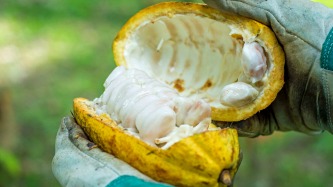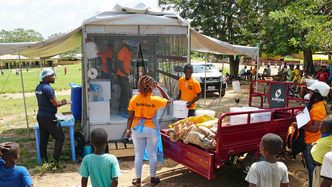

Swiss Partners
Koa Switzerland GmbH, Zurich,
www.koa-impact.com,
Anian Schreiber
Project Type:
Technology:
Country:
Project Status:
Project Start:
End of Project:
Contract:
Documentation
Swiss Contribution
The technology and process development of the use of cocoa pulp is being carried out by Koa Switzerland GmbH. The Zurich University of Applied Sciences (ZHAW) contributes its expertise in food processing for the production, storage and transport of cocoa bean juice.
Description
By using solar energy, high efficiency electrical engineering and marketable food processing methods, cocoa pulp (10-15% of the cocoa fruit) can be extracted. Until recently, cocoa pulp was treated as waste. However, now juice is pressed from this pulp on farms under hygienic conditions then stored safely. Based on an existing prototype, solar powered mobile extraction stations, a complete cold chain and a regional processing centre will be set up. A guideline and training materials for use at the facilities will be prepared.
Results
The concept’s technical and economic feasibility has been demonstrated. The processing centre was commissioned in Assin Akrofuom in November 2018. Microbiological analyses carried out by UFAG Laboratories confirmed that the juice complies with hygiene and food safety standards. By the project’s end, 1,300 cocoa farmers had been trained, 230 farmers were regularly supplying the necessary cocoa pulp and 35 tonnes of juice had been produced.
Impacts
Thanks to the use of the previously discarded pulp, the producers’ income has increased by approximately 30% and an additional 15% of the cocoa bean is now usable by the food industry. Production capacities have been increased (from 20 to 100 tonnes of juice annually) in view of the much higher than expected demand. The construction of a second production module is planned, which will double its capacity, as well as augment the number of staff (35 employees at the REPIC project’s end). The share of photovoltaic electricity in the processing centre’s power supply should eventually increase to more than 75%.